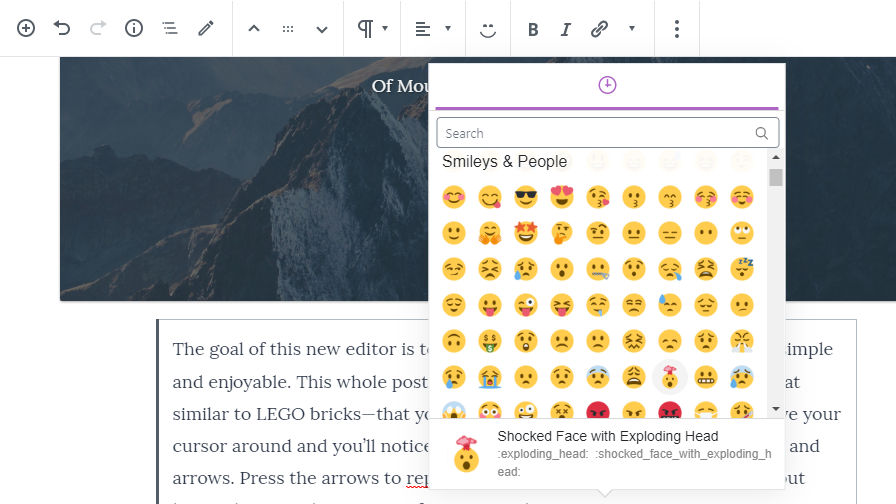In December of 2019, Nick Hamze, the owner of Sorta Brilliant, quietly launched Block Garden with a proposal for plugin authors to build block-based plugins off concepts, called seeds, from his site. He has since written extensively on the block editor and has shared a multitude of ideas, many of which are sorta brilliant.
It is easy to be drawn in by Hamze’s unabashed love for blocks. In a post titled “You aren’t busy, you’re just not excited,” Hamze challenges developers to build something, anything and not worry about it being perfect or becoming an earth-shattering product. “The purpose of Block Garden is to get you excited about blocks,” he wrote in the post. “To make you so excited about blocks that you’ll make the time to bring them to life. The community needs you more than you realize. I honestly believe that every person has at least one block in them. If I can get you to create that first block, I know you’ll be hooked for life.”
He has created a space for those who genuinely love the block editor. Block Garden is reminiscent of some of the early WordPress blogs where normal, everyday end-users shared their love of the platform. It is refreshingly optimistic. It is block geekdom at its finest. And, I kind of love it.
Hamze put out a job posting for block developers earlier this month. Several developers answered the call. “I can’t code but I have ideas and cash that I’m investing into blocks, mostly to keep the boredom at bay that is slowly killing me,” he said. “We are making some really fun blocks together. This is just the tip of the iceberg.”
In a few short weeks, Hamze and his co-authors have released multiple block-related plugins through his Sorta Brilliant brand that are now available on the WordPress plugin directory:
- P.S. – A container block for grouping blocks into a popover.
- StreamShare for Twitch – Embed Twitch content into the block editor.
- Ghostwriter – Adds a heading block style that types out the text on the front end, Ghostwriter style (for you fans of the ’90s TV series).
- Ubiquitous Blocks – Exposes the Reusable Blocks admin screen and allows users to automatically add them to posts.
Emoji Conbini

In collaboration with George Mamadashvili, Hamze’s latest release is the Emoji Conbini plugin. It adds an emoji inserter to the block editor toolbar.
Emoji Conbini utilizes the Emoji Mart library, which offers a Slack-like emoji picker. When the picker is open, the user merely needs to choose their preferred emoji. Users can also search for a specific emoji.
Hamze was aware of the Emoji Autocomplete Gutenberg plugin before commissioning his emoji plugin for the block editor. “I loved how easy it made adding emoji but I didn’t like the UI,” he said. “It seemed like you had to know what emoji you wanted to add and relied on keyboard shortcuts, which I don’t think everyone is comfortable with.”
The problem with both emoji plugins is that they insert the WordPress-based emoji image directly into the editor instead of the emoji character. By default, WordPress will automatically convert emoji characters to images on the front end. For the average user, this is likely a non-issue. However, some users prefer to use the browser-based emoji and disable the images that core outputs. Both emoji plugins remove this possibility. They also remove the possibility of using a different emoji image library.
“To be honest, I’m not really a fan of the browser versions, but I’m willing to consider anything if there is a demand for it,” said Hamze of the possibility of simply inserting the emoji character. “To me, getting version 1 out there is the most important, and if anything needs to be changed, people will let me know.”
The term “conbini” initially drew me to the plugin, which is the name given to Japanese convenient stores 🏪. If you have never been to one, they are like stepping into another world (almost everything in Japan seems otherworldly to this smalltown guy from the southern U.S.).
“I love everything from Japan,” said Hamze. “The music, anime, the tech. I bid on items on Yahoo Japan daily as I love surrounding myself with cool stuff from Japan. I’ve only been to Japan once, but it was magical. I especially loved going to conbini. My favorite thing to get there was rice balls from Lawsons.”
The plugin name also plays into Hamze’s goals with Sorta Brilliant and Block Garden. While many other plugins are offering full packages for blocks, he is dropping smaller, convenient extensions to the block editor. Emoji Conbini shows that there is perhaps a market for add-ons that are block-related but not necessarily blocks, or at least some people are thinking about it.
Discovering Block Extensions
In his post “The block directory needs more than just blocks,” Hamze argues that one of the largest hurdles for block-related plugins is discoverability. He further argues the block directory is too tightly focused on individual blocks, proposing a “block enhancements” category as a solution.
For Emoji Conbini, 10up’s Insert Special Characters, ThemeIsle’s Blocks CSS, and other plugins that extend the block editor, there is no way for users to discover these plugins without specifically searching for them. These are useful plugins that could help sell the block editor to users who are on the fence.
There is an unknown number of possibilities for enhancements to the block editor. This sub-category of block-editor plugins does not seem to get the attention that is going toward blocks. However, in some cases, they can be far more useful for everyday writing than the numerous blocks in development.
Hamze’s initial idea proposes an enhancements category for the upcoming block directory, but that has problems. For one, the block directory will be directly tied to the block inserter in a future version of WordPress. Plus, these types of plugins are not actual blocks. However, the concept of making block enhancements more visible to users is a necessary part of the puzzle. For the block editor’s continued success, WordPress needs to expose its users to a wider world of possibilities than simply installing another block.
Now is the time to start thinking about exposure for plugins that enhance the block editor. Eventually, these types of plugins may need to be further grouped into editor toolbar (e.g., character inserters), block options (e.g., extra settings for existing blocks), and other categories. I suspect that we are only now glimpsing a future where users will be asking how to find not just blocks but block editor extensions.




